

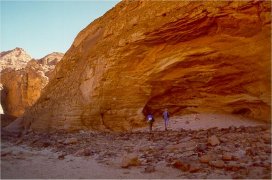
|
Wadi Sora, the real "Cave of Swimmers" |
Wadi Sora is located in South-western Egypt, along the western edge of the Gilf Kebir plateau. It's not really a wadi, just a sheltered inlet among a promontory and a couple of detached outliers of the main plateau. The main painted caves were discovered by Almásy in October 1933 during the Frobenius expedition. They contain the little ‘swimmer’ like figures which inspired the fictious cave of swimmers in the movie "The English Patient". In the vicinity of Wadi Sora there are numerous other rock art sites, including the "giraffe rock" discovered by P.A. Clayton in 1931, and few lesser sites discovered by Almásy and Rhotert in 1933 (Published in Rhotert's Libysche felsbilder, 1952). There are several quite spectacular sites scattered in the nearby bays and wadis that have not been seen by the early explorers. These have been discovered over the past decade by Giancarlo Negro, Yves Gauthier, Werner Lenz, ourselves, and others.
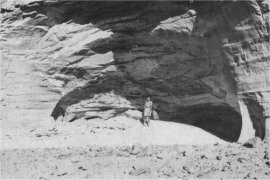
Almásy at Wadi Sora in 1933
Main Caves
The two main caves (really hollows at the base of the cliff) lie at the right entrance of the inlet, no more than 50 m from the outer cliff face, at the base of a spur of the main plateau. There is a small watercourse in front of the main caves, which can be followed for some distance into the cliffs, ending in a very scenic ravine.
One (Cave C, Rhotert's numbering) is substantially larger, and contains most of the paintings in several groups, including the famous swimmers, plus a hoard of other miniature figures.
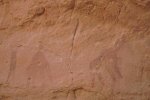
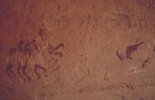
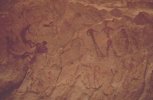
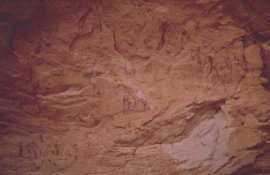
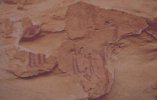
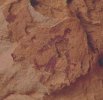
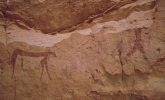
The smaller cave, 15 m to the right (Cave D) contains a single scene, probably more recent, of cattle, female figures and a group of archers, in a very artistic abstract style.
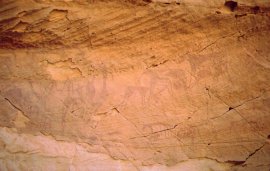
About 800 m north from the main caves, there is a solitary rock on the valley floor, with a small underhang. In this shelter there are a few very faded paintings and engravings of humans and giraffes (Cave F).
Other Sites
Wadi Sora lies near the tip of a broken rocky promontory, that is an offshoot of the main bulk of the Gilf Kebir. To the north, the country is very picturesque, with many isolated blocks and valleys in between. It was here that Patrick Clayton discovered in 1931 a couple of faint engraved giraffes on an isolated block near the entrance of a broad valley. On the other side of the same rock Almásy and pary found further faint engravings in the spring of 1933.
In the same general vicinity, Almásy and Rhotert located a number of lesser sites during the autumn 1933 expedition (at the same time when the main caves were discovered). One is an engraving of a 'nubian' type skirted woman, and three painted shelters whose exact location remains a mystery. After repeated detailed surveys of the area by many in the recent years, to my knowledge still noone has located them.
Very close to the rock with the engraving of the skirted woman, Giancarlo Negro & party found a low shelter with some paintings in the mid-eighties (which remain unpublished), and our team found three more sites with very faint and damaged paintings close by in March 2001.
In 1991 Giancarlo Negro & Yves Gauthier made a detailesd survey of the area encompassing a broader area. During this survey, they have found a large and well preserved shelter with many white painted cattle, and a curious dark feline like figure near a negative hand print. Another shelter was found at some distance with some damaged figures in the same style as the 'cave of swimmers'. Their findings were published in GAUTHIER, Yves et NEGRO, Giancarlo, Nouveaux documents rupestres des environs du Wâdi Sura (Gilf Kebir, S.-O. de l'Égypte), Bulletin de la Société d'Études et des recherches préhistoriques des Eyzies 48 (1999), pp. 62-79.
In February 2001 Werner Lenz and party found a beautiful shelter some distance from Wadi Sora proper, which contain a series of very well preserved overlapping scenes of several periods (including faint engravings that were painted over, and some small erased figures of the 'cave of swimmers' style). On the ceiling there is a unique scene of two negative hands, the colors as vivid as if it were made yesterday.
During our March 2003 expedition, we have found a small shelter near the white painted cattle reported by Gauthier & Negro. It contains a scene of calves tethered to a tree, in a style identical to that at Jebel Uweinat. This scene, found at several other locations at Uweinat, is unique in it's very high degree of standardization accross a large geographic area, reminescent of the rigidly standardized iconography of ancient egypt.
Roughly half way between Wadi Sora and the Aqaba Pass, Giancarlo Negro and party found but not published in the mid eighties a low shelter with scenes of 'roundhead' type figures.

|

|

|